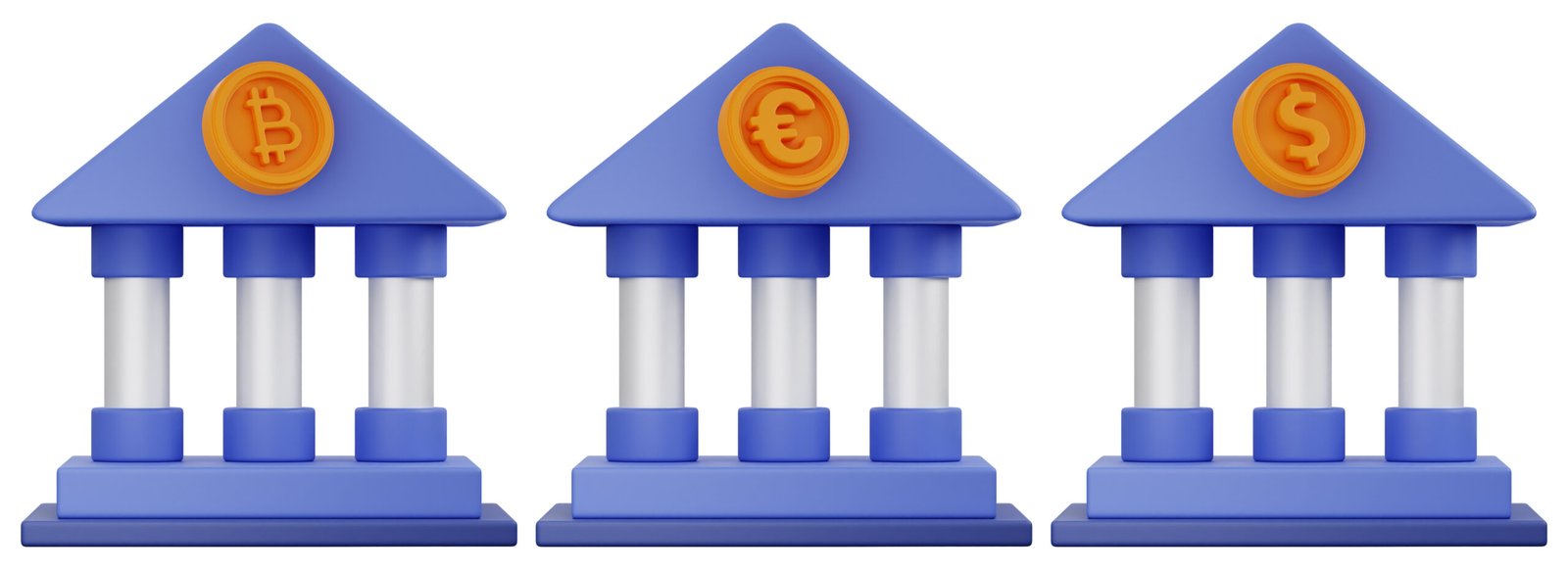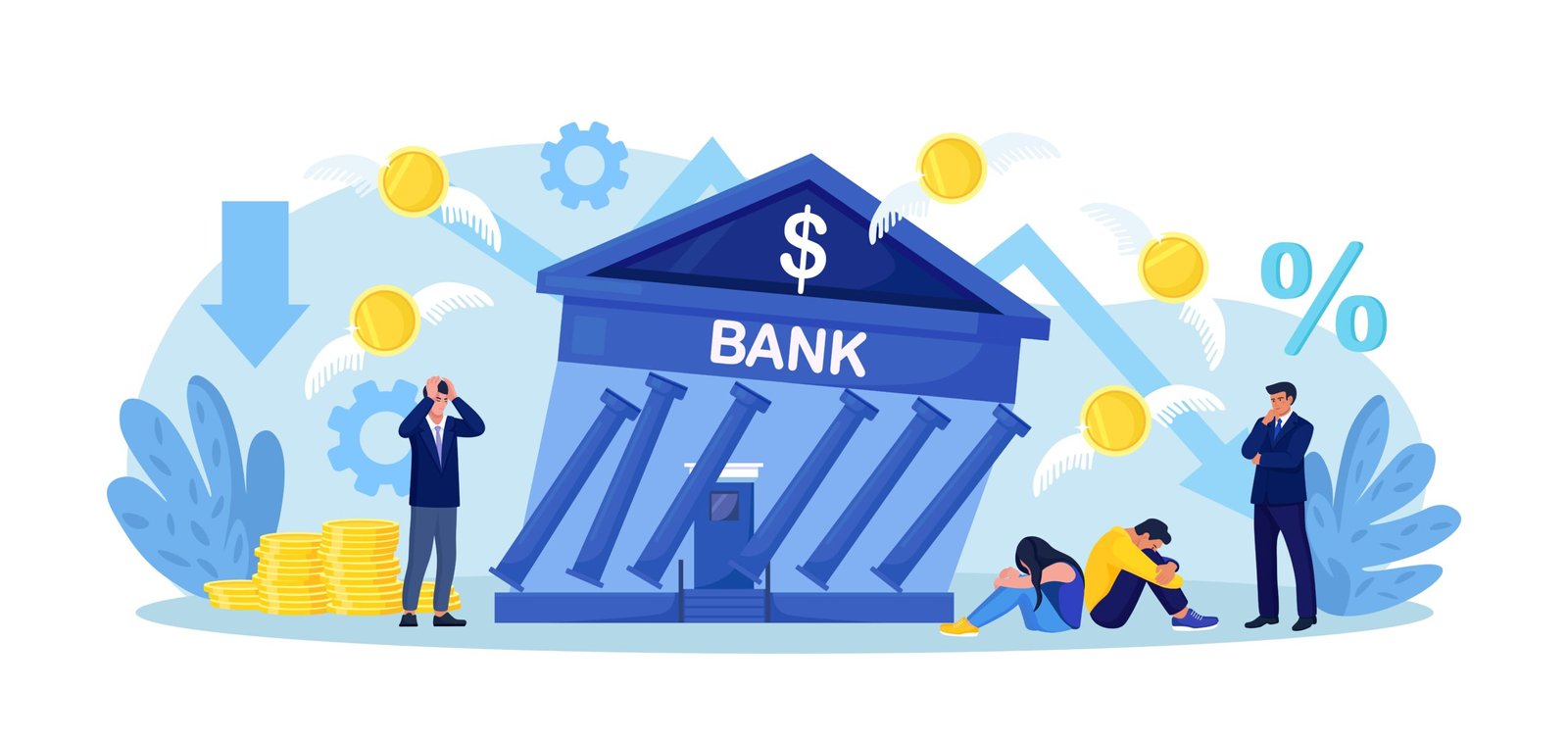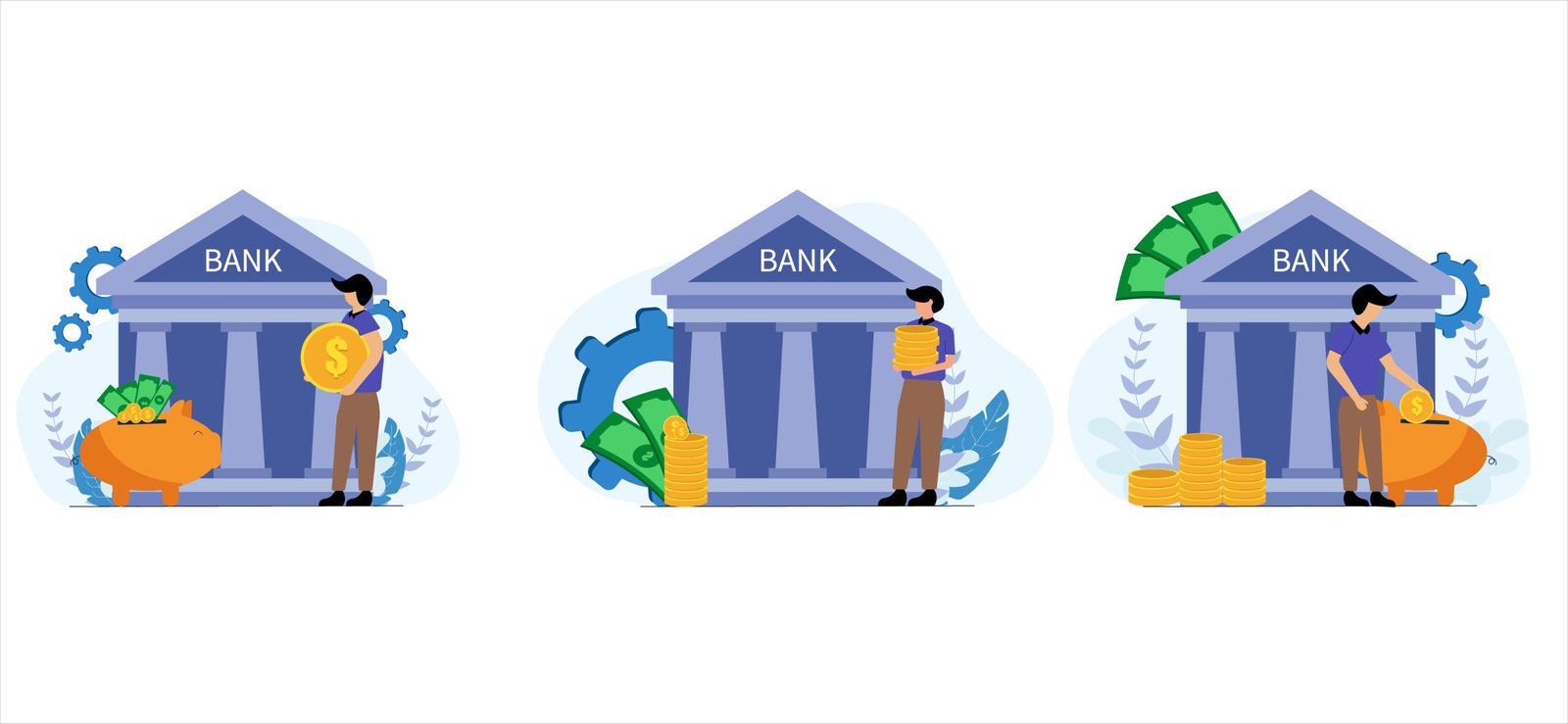What Is .bank.in Domain? RBI’s New Mandate Explained

As digital banking becomes the default for millions of Indians, the Reserve Bank of India (RBI) has introduced a major update aimed at improving online safety the mandatory use of the “.bank.in” domain by all Indian banks.
It might sound like a small technical change, but this shift carries huge significance for cybersecurity, customer trust, and how users identify legitimate banking websites. Let’s break it down simply and clearly.
What Is “.bank.in”?
The “.bank.in” domain is a new, restricted top-level domain (TLD) that can only be used by banks licensed and regulated by the RBI. Unlike regular “.com” or “.in” domains, “.bank.in” is exclusive to verified Indian banks, ensuring that customers can easily identify authentic websites. This domain is managed and approved by the Institute for Development and Research in Banking Technology (IDRBT) the technology and cybersecurity arm of the RBI. The IDRBT ensures that only authorised banks can register for this secure domain, helping to eliminate fake or look-alike URLs that often lead to phishing scams.
Why Did the RBI Introduce It?
- To Combat Rising Online Fraud: Digital payments have brought convenience but also risk. Fraudsters often create fake websites that mimic official bank portals. The RBI’s new mandate aims to stop this by giving banks a trusted, standardised online identity that’s easy for customers to recognise.
- To Strengthen Trust:When a user sees a URL ending with “.bank.in”, they can be confident it’s genuine. This reduces the chances of falling victim to phishing or spoofing attacks.
- To Modernise Banking Infrastructure: Globally, banks have been adopting restricted domains such as “.bank” to enhance security. By introducing “.bank.in”, the RBI is aligning Indian banking with international best practices while maintaining national oversight.
What’s the Deadline — and Are There Penalties?
According to the RBI’s directive (April 2025), all Indian banks must migrate to the “.bank.in” domain no later than October 31, 2025.
So far, no extension or penalty framework has been publicly announced but non-compliance could attract regulatory scrutiny and reputational risks. Banks that haven’t started migration are expected to act immediately to ensure a smooth transition.
For customers, this means that by late 2025, every genuine Indian bank’s official website should end with “.bank.in”.
Role of IDRBT — The Technology Partner Behind the Change
The Institute for Developement and research in Banking Technology (IDRBT), based in Hyderabad, plays a crucial role in making this transition successful.
It acts as the official registrar for the “.bank.in” domain, authorised by the National Internet Exchange of India (NIXI) and MeitY
IDRBT’s responsibilities include:
- Managing domain registration for RBI-approved banks.
- Providing technical guidance on DNS setup, SSL certificates, and safe redirects.
- Ensuring all registered domains follow strict cybersecurity standards.
- Offering support and documentation to help banks complete migration smoothly.
How Does This Help Customers and Banks?
For Customers:
- Quickly identify genuine banking websites.
- Reduced phishing risks.
- More secure digital transactions.
For Banks:
- Improved trust and brand credibility.
- Enhanced compliance with RBI’s cybersecurity policy.
- Protection against fake domains and impersonation.
The Bigger Picture
The RBI’s “.bank.in” initiative isn’t just a technical change it’s a trust-building exercise. It creates a safer online environment where customers can confidently interact with banks, knowing their data is protected. For financial institutions, it’s a chance to modernise, secure their brand, and lead the way in a safer digital era for India’s banking ecosystem. At Lumiverse Solutions, we view it as a critical move toward a secure, transparent, and future-ready banking ecosystem.
Need help migrating your bank domain securely?
Partner with Lumiverse Solutions to ensure a smooth transition to “.bank.in”.
Get Expert AssistanceLearn more from official sources: RBI Circular and Economic Times.
Recent Posts
Subscribe to our Research
Enter your email address to subscribe to Lumiverse Research and receive notifications of new posts by email.
FAQ
Yes, all Indian banks are required to shift to .bank.in by June 2025 as asserted in the RBI’s circular.
No. RBI-regulated licensed banks alone may apply.
They will automatically point to the new .bank.in domains.
Yes. With DNSSEC, HTTPS, DMARC, and authenticated registrants — it’s one of the safest extension.
Tell Us Your Opinion
We value your perspective! Share your thoughts, feedback, or questions below. Your opinion matters and helps create a richer, more engaging conversation. Let’s connect and hear what you think about this post!

RBI’s Vision Behind the Mandate
So again, what is .bank.in domain in the context of RBI?
RBI’s 2024 circular clearly stated that all banks must migrate to a .bank.in domain by June 2025. This mandate aims to:
- Enhance trust and legitimacy of banking websites,
- Prevent spoofing, phishing, and clone websites, and
- Promote a standardized, RBI-approved digital identity for banks.
Why Is the .bank.in Domain Mandate Needed?
Let’s look at why RBI had to mandate the .bank.in domain in the first place.
1. Rise in Banking Frauds
Spoofed bank sites are usually created by cyber criminals using names like:
- hdfcbank-security[.]com
- icicibank-login[.]in
- sbi-customer-support[.]com
The users become duped into providing login details or OTPs. But in .bank.in, it can happen only by the Indian banks registered and qualified to utilize the domain.
2. No Identity Authentication in Generic Domains
Banks have used:
- .com
- .co.in
- .in
- .net
These are open domains, where anyone can register without identity authentication, and thus they are unsafe.
3. Global Use of Secure Banking Domains
- USA and others use .bank, an fTLD-hosted restricted domain, for the same intent.
- India’s equivalent — .bank.in — is RBI-approved, India-specific, and facilitates Digital India initiatives.
- Important Features of the .bank.in Domain
So that you can learn what is .bank.in domain, you must know its technical and security features:
1. Restricted Access
- Scheduled commercial banks,
- Small finance banks,
- Cooperative banks, and
- Regional rural banks
are allowed to buy a .bank.in domain name, on the condition of RBI license proof.
2. Spoofed DNSSEC (Domain Name System Security Extensions)
DNSSEC defends against DNS spoofing and cache poisoning attacks.
3. Defaults to HTTPS Encryption
All .bank.in domains require SSL certificates, which is to be at least TLS 1.2 encryption level.
4. Email Authentication
Forced on SPF, DKIM, and DMARC to prevent email spoofing attacks.
5. WHOIS Privacy Disabled
The .bank.in domains retain their WHOIS data open, or maximum openness and trust.
6. No Subdomain Resale
Which implies that the subdomains and domains cannot be resold, monetized, or transferred-the entire package is reserved only for banking activities.

Benefits of Having a .bank.in Domain
Following are the most crucial advantages that render .bank.in domain worth the exercise:

When the customers receive a name like axis.bank.in or sbi.bank.in, it makes them recognize it as official as well as RBI-sanctioned in the first try itself.

The banks no longer have any concerns about the spoofed or cloned domains. The domain itself serves as a security boundary.

As .bank.in domains are niche-specific, they:
- Attract more domain authority,
- Rank higher in banking-related searches,
- Enjoy better CTRs (Click-Through Rates) in search engines.
- Migrating to .bank.in ensures:
- RBI compliance,
- Cyber insurance eligibility,
- Better audit scores under ISMS, SOC2, and PCI-DSS frameworks.
RBI’s Official Circular: Highlights of the Mandate




How Banks Can Migrate to .bank.in Domain – Step-by-Step
Understanding what .bank.in domain is also understanding how to set it up.

- Banks must possess an RBI license and must be registered on the RBI database.

- Submit:
- Proof of registration at RBI
- Legal authorization letter
- Domain admin KYC information

- DNSSEC enabling
- EV SSL Certificates purchase
- Implement SPF, DKIM, DMARC

- Migration of banking portals, mobile applications, and online services
- URL change to be made on:
- SMS notifications,
- Emailers,
- Ads, and
- QR-based payment systems.


- 301 redirections of current domains to be triggered
- Uptime, logs, and security alerts to be tracked
What if the banks are not compliant?
- If one bank does not remain compliant until June 2025:
- Punishments or restrictions by RBI
- Cyber insurance to be made void
- Greater chances of theft of customer data and fraud
- Loss of customer trust on the internet and SEO ranking
What Is .bank.in Domain? – Impact on Customers
Considering it from the customer perspective, what is .bank.in domain all about .

Customers can safely rely only upon those sites which possess extension .bank.in.

Customers will be less deceived by attempts at phishing from sites that look like them.

Due to enforced DMARC and DKIM, bank spam e-mails will be greatly reduced.
Fintechs, NBFCs, and Third-Parties How to Change
Although fintechs and NBFCs are not mandatory to use .bank.in via law, they are majority banking partners. Hence, they must:
- Make .bank.in domains functional in USAID, AEPS, and lending APIs
- White-list .bank.in domains in firewalls and anti-spam filters
- Upgrade DNS and logic in code to accept and trust .bank.in redirects
- Global Context: Parallel Domain Mandates across the globe
- USA: .bank (fTLD Registry)
- Exclusive registration to approved banks alone. Implemented by FFIEC and OCC.
- EU: .fin.ec or .bnk.eu
- Local domain mandates implemented to block EU bank scams.
India’s .bank.in gTLD is also keeping pace with the global trend but is the first to enforce DNSSEC and DMARC at mass level.
Most Popular Myths About .bank.in Domain

Fact: It’s an end-to-end security makeover with strong DNS and certificate controls.

Fact: RBI-regulated banks only are permitted.

Fact: Proper redirection and SEO best practices are used to maintain and even enhance ranking.
SEO Benefits of .bank.in Domain
Want to know what is the SEO worth of .bank.in domain? Here is a brief overview:

loan.bank.in, credit.bank.in, mobilebanking.bank.in domains make search more contextual.

Google users like original domain names.

Technical press and regulation websites are more inclined to link to secure domains.
Future Scenario: Will We Get .nbfc.in or .fintech.in?
- RBI and NIXI can finally provide for:
- .nbfc.in for registered NBFCs
- .in or .fintech.in for regulated fintechs
- .upi.in for UPI service providers
But till now, .bank.in is the only mandatory secure domain in Indian finance.

Conclusion: What Is .bank.in Domain? A Game-Changer for Indian Banking
Finally, let’s have a quick rundown:

A secure, RBI-approved, verified domain name reserved exclusively for Indian banks.

To prevent spoofed domains, build confidence, secure DNS/email, and bring India at par with global best practices.
What You Should Do?
- Banks will port and fall in line by cut-off date .
- Customers should depend and deal on .bank.in domains alone.
- Fintechs will prepare backend systems and update integrations .
Last Word
Now that you know all this about what is .bank.in domain, spread the word. This RBI initiative is not a switch of domains it’s a security enhancement of India’s online banking system.
Introduction: What Is .bank.in Domain?
As the fintech era turns digital, the responsibility falls on as much as trust and security are involved. With more cyber frauds, phishing cases, and fake bank websites, Reserve Bank of India (RBI) has taken a historic step by introducing the use of .bank.in domain for all Indian banks.
All this will be elaborated in detail within this blog:
What is .bank.in domain?
First of all, let us talk about its benefits, how it impacts bank security, search engine optimization, and trust.
Steps followed in the process of compliance of the banking sector.
And what it implies for fintechs and customers.
Let’s start the ride of .bank.in domains and see more about this important RBI initiative.
What Is .bank.in Domain? – A Detailed Overview
The .bank.in domain is a secure and restricted domain introduced under the ‘.in’ domain hierarchy managed by INRegistry and governed by NIXI (National Internet Exchange of India). It is exclusively meant for Indian banks, ensuring:
- Verification-based registration (only genuine banks can apply),
- Restricted use, and
- High-level DNS and HTTPS security features.

